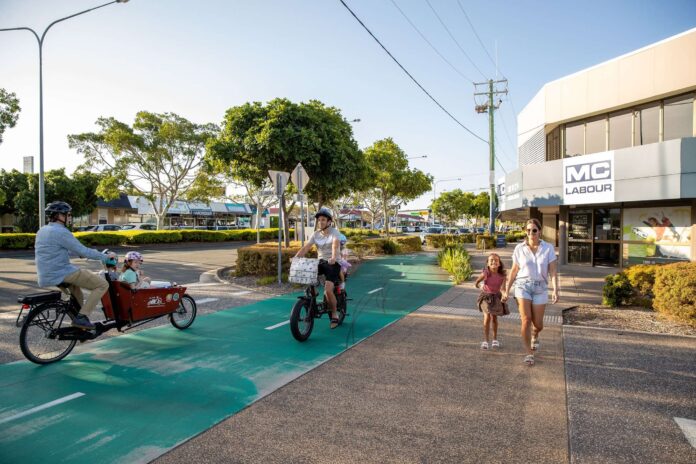Details have been revealed for two proposed active transport routes that will connect education, retail and residential hubs.
Locals can now have their say on plans for the Mooloolaba to the University of the Sunshine Coast (M2U) and Caloundra to Currimundi (C2C) corridors.
The M2U corridor is a planned 10km route that will link six schools, shopping centres and the communities of Mooloolaba, Mountain Creek, Sippy Downs and Buderim.
The C2C corridor is expected to provide a safe and direct 6km route connecting six schools, shopping centres and the communities within Currimundi, Dicky Beach, Moffat Beach and Caloundra.
Councillor David Law said the routes should provide connected, safe and sustainable transport options.
“On average more than 70,000 people per week ride bicycles on the Sunshine Coast,” he said.
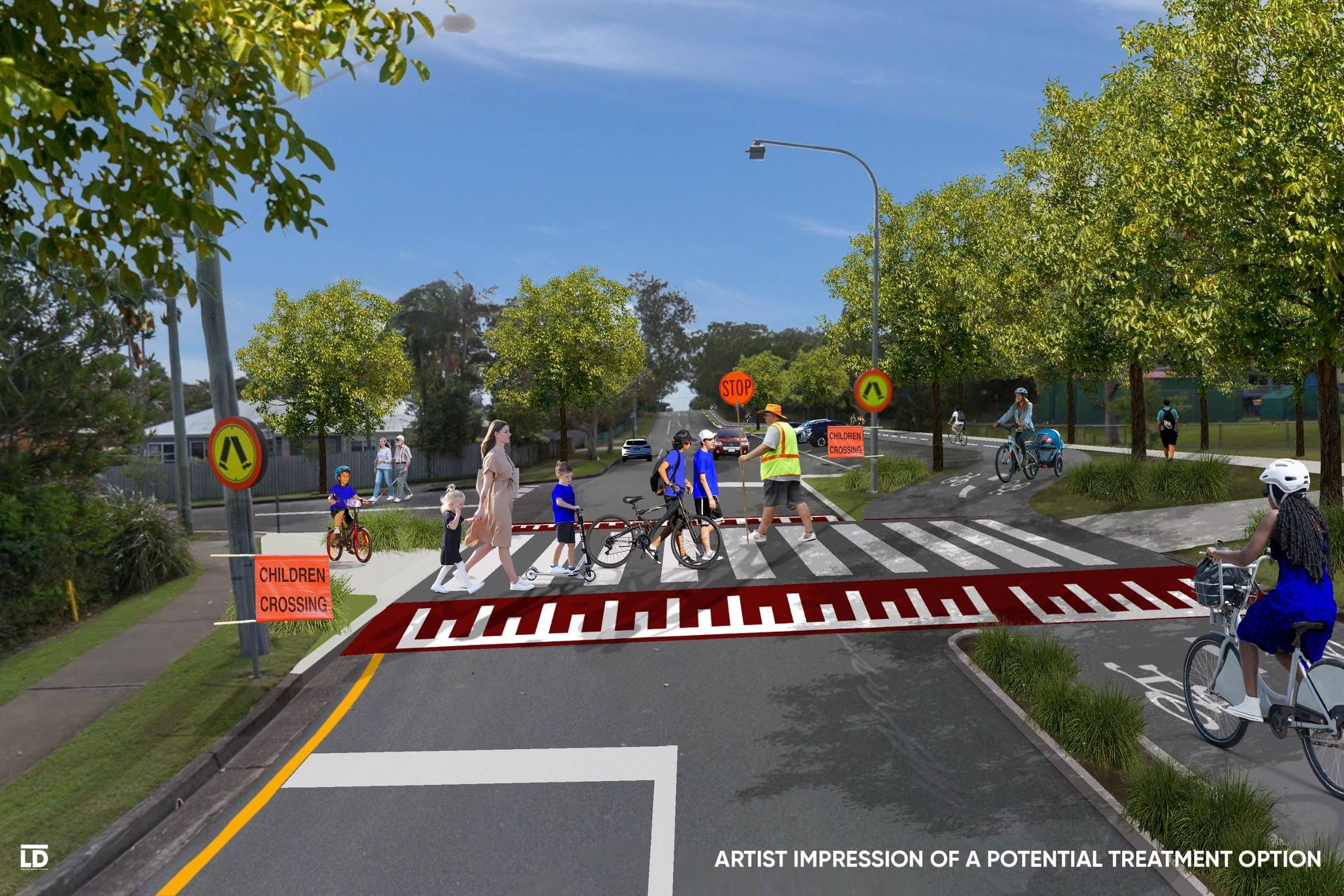
“Walking and cycling will play an increasingly important transport role in the future and we’re planning now to help support this.
“Active transport along these two corridors will deliver improved mobility, safer streets, and healthier communities, and I encourage our communities in these areas to share your feedback with us.”
The Australian and Queensland governments are contributing $1.9 million each in funding through the South-East Queensland Liveability Fund, a commitment under the SEQ City Deal, towards sections of the active transport corridors.
Planning for the entire route of these corridors is a multi-year, long-term project and funding will be required to progress the other stages to design and construction.
Both routes are recognised on Queensland Government’s Principal Cycle Network.
The M2U project aims to significantly increase the number of people walking and riding between Mooloolaba and the University of the Sunshine Coast.
Councillor Christian Dickson encouraged people to have their say on that route, to help council create an inclusive walking and riding outcome for people of all ages and abilities.
“All members of our community deserve to feel safe and welcome on our streets,” he said.
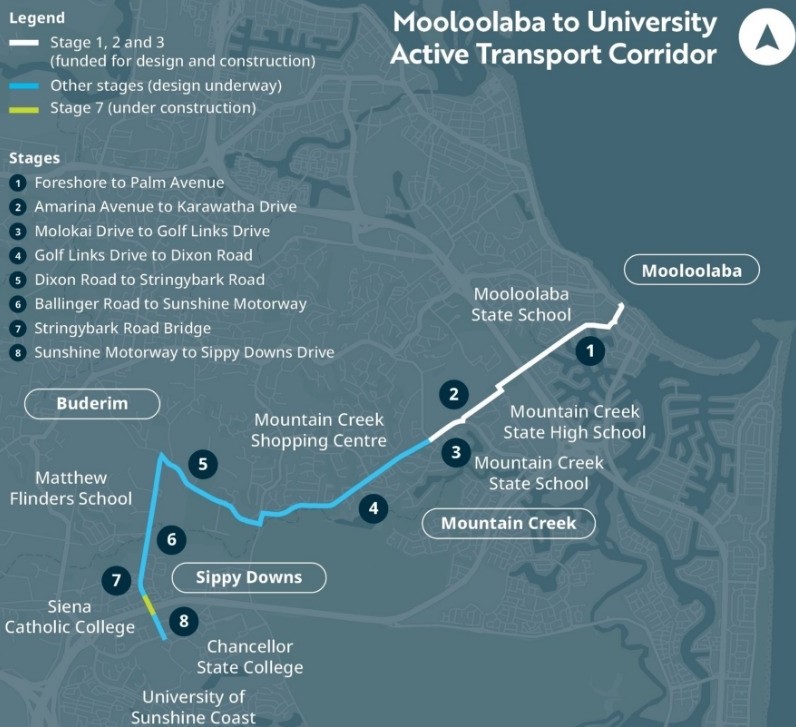
“This active transport corridor connecting Mooloolaba to the University of the Sunshine Coast will ensure that more people can get around safely, whether for recreation or commuting.
“It will help create calmer streets, particularly around schools, and integrate effectively with surrounding open space area.”
Councillor Tim Burns said, according to last year’s Queensland Household Travel Survey, almost 80,000 total daily trips were made by active transport in the Sunshine Coast region in 2023.
“For active transport on the Sunshine Coast, the average travel distance and time for bike riding is 2.3km and 14 minutes, for e-mobility is 2.3km and 12 minutes, and for walking is 0.8km and 15minutes,” he said.
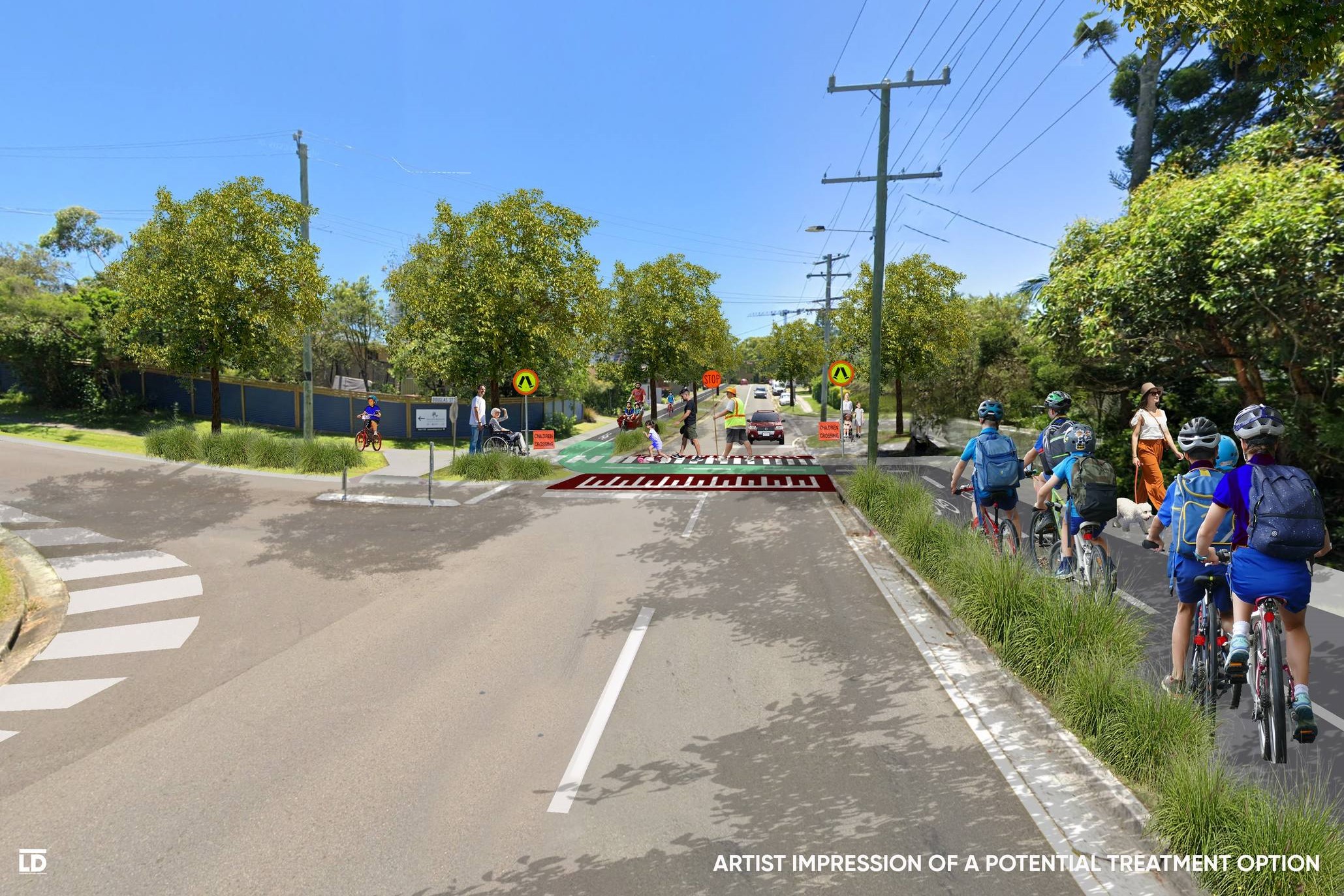
“The Caloundra to Currimundi Active Transport Corridor will deliver a safe and comfortable route to significantly increase the number of people walking and riding within Currimundi, Dicky Beach, Moffat Beach and Caloundra.
“This active transport route will create safer and more accessible streets.
“It will reduce the need for interaction between motorists and people walking or riding bikes on roads.
“It will cater for people of all ages and abilities and connect seamlessly with parks, beach and shops.”
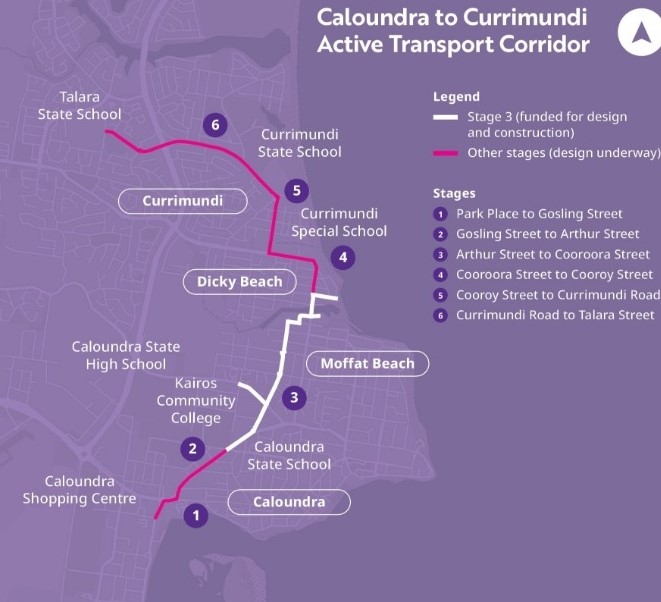
Cr Law said stakeholder and community engagement would play an important role in ensuring connectivity and accessibility measures were tailored to community needs.
“We want to hear from residents so we can find out how active transport can be improved and used by more people in our community,” he said.
“Between November 4 and November 29 we invite our community to provide feedback via an online survey.
“Your input and feedback will help us to better understand the issues and opportunities along these two corridors, understand the type of active transport infrastructure that is important to our community, and ensure connectivity and accessibility measures are tailored to the needs of the communities along these routes.”

Community members can provide feedback via Have Your Say.
The projects will have two phases of community engagement.
Feedback gathered during phase 1 will be used to inform planning and design of the corridors. It will ensure that council recognises and addresses any potential issues or concerns.
Next year, as part of phase 2 community engagement, council will share the outcomes from Phase 1 community engagement and present the corridor designs to the community for feedback and commentary.
Feedback received during phase 2 will be used to finalise the detailed design of both corridors.
Funding is required to progress other stages to design and construction. Council will keep the community updated with information as it becomes available.
Want more free local news? Follow Sunshine Coast News on Facebook, LinkedIn and Instagram, and sign up for our FREE daily news email.


